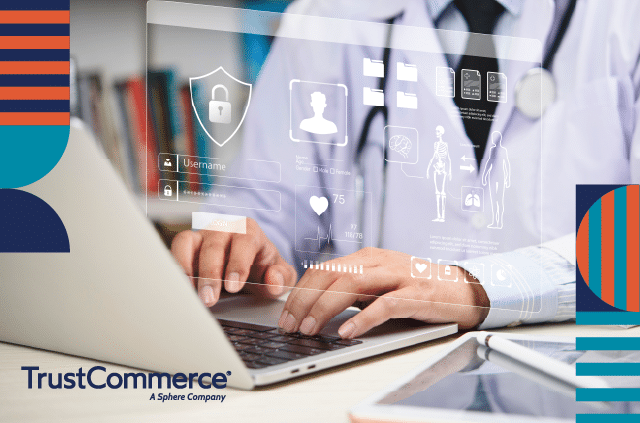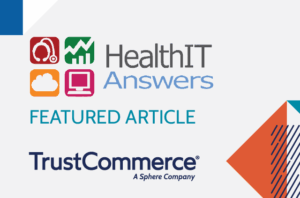Cybercriminals are zeroing in on healthcare, and the consequences are severe. In 2024, the average cost of a healthcare breach reached $9.8 million—higher than any other industry. But behind every data point is a patient, a disrupted care team, and a hospital system scrambling to restore operations. Security isn’t just a technical issue. It’s a trust issue.
What Makes Healthcare So Vulnerable
Healthcare organizations hold an exceptionally broad range of sensitive data: clinical records, identity-related data like social security and insurance numbers, and financial data such as credit card or banking details. All of it is highly valuable on the dark web—and difficult to replace once stolen.
And the issue goes beyond data. Hospitals play an essential role in public safety and continuity of care. When systems are down, procedures are delayed, putting patient safety in jeopardy. That urgency may make providers more likely to pay ransoms quickly, reinforcing the attacker’s business model.
Sophisticated threats like synthetic identity fraud are also on the rise. These attacks combine real and fabricated information to create convincing—but fake—identities that are difficult to detect. Synthetic identities tend to blend in by mirroring normal behaviors. Because they incorporate legitimate information, regular verification methods can fall short. Undetected, they can cause significant damage.
Legacy Defenses vs. Modern Threats
Firewalls and passwords are necessary but are no longer enough for a strong defense. Attackers increasingly use AI to create convincing phishing emails that mimic real colleagues and vendors. And because people are human, one click in a hurry can open the door to a major incident. Security strategies must evolve to acknowledge both the strength of modern threats and the inherent fallibility of human behavior.
What Zero Trust Looks Like in Practice
One effective framework for today’s landscape is Zero Trust Architecture (ZTA). Think of it like airport security: even trusted flyers go through screening every time. Zero Trust applies the same logic to access requests. Every time.
ZTA works by continuously verifying identity and behavior, not just once at login. Core components include:
- Micro-segmentation of networks to isolate sensitive systems like billing and EHRs
- Strong verification methods that exceed basic login credentials
- Real-time monitoring that flags anomalies like off-hours access or large data transfers
These controls help prevent attackers from moving laterally once inside and support a more resilient security posture overall.
Payment Data: A High-Risk, High-Priority Asset
Among patients who have received breach notifications, nearly a third say it involved payment data. This is one of the most immediately usable data types for cybercriminals.
Storing cardholder information dramatically increases exposure and compliance costs. Instead, healthcare providers should:
- Avoid unnecessary storage of cardholder data
- Encrypt data at the point of entry
- Use tokenization to replace sensitive data with non-exploitable placeholders
These practices not only reduce the attack surface but also minimize PCI DSS scope and audit requirements.
How to Make Secure Payments Seamless
Security and convenience aren’t mutually exclusive. In fact, thoughtful payment design can improve both.
Examples include:
- Tokenized card-on-file capabilities for faster checkout
- Integrated payments through EHR portals
- Digital wallet support (e.g., PayPal, Apple Pay, Venmo)
Embedding security into the user experience ensures that patients can pay confidently—without friction or risk.
Why Cybersecurity Needs to Keep Evolving
The biggest risk isn’t always the newest malware. Often, it’s assuming that a security program is “done.” Cybersecurity isn’t a one-time project. It’s a continuous process.
Healthcare organizations should reassess their security posture at least annually and after any operational or regulatory change. Real-time analytics and behavior monitoring can also surface emerging threats before they escalate. Taking proactive steps help organizations stay ahead of emerging threats.
How TrustCommerce Helps Providers Stay Ahead
TrustCommerce supports healthcare organizations with solutions designed to protect sensitive patient data and simplify compliance at the same time. Our platform includes:
- PCI-validated point-to-point encryption (P2PE)
- Secure tokenization technology
- Real-time fraud detection
- Integration with top EHR systems like Epic and Veradigm
By minimizing the data that touches your network, reducing your PCI scope, and embedding security into every transaction, TrustCommerce helps you safeguard patient trust while streamlining operations.
Security That Supports Care
Every transaction is a moment of trust. With the rise of cyberattacks, healthcare organizations must prioritize payment security throughout the patient journey. The right technologies can safeguard not just data, but also the confidence patients place in your organization.
Watch the Recording
Learn more about practical cybersecurity strategies in our expert-led webinar, From Diagnosis to Defense: AI’s Role in Healthcare Security. Watch the recording and discover how to build security into every patient interaction.




